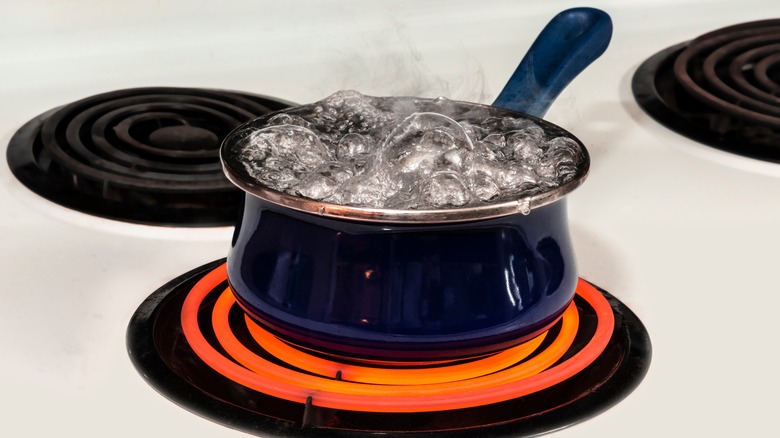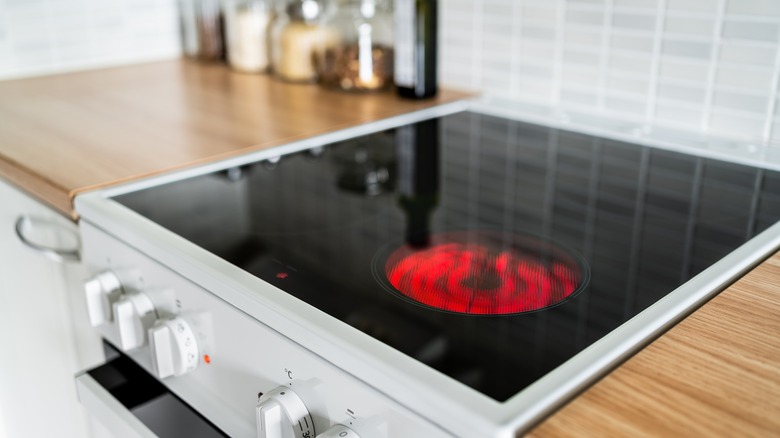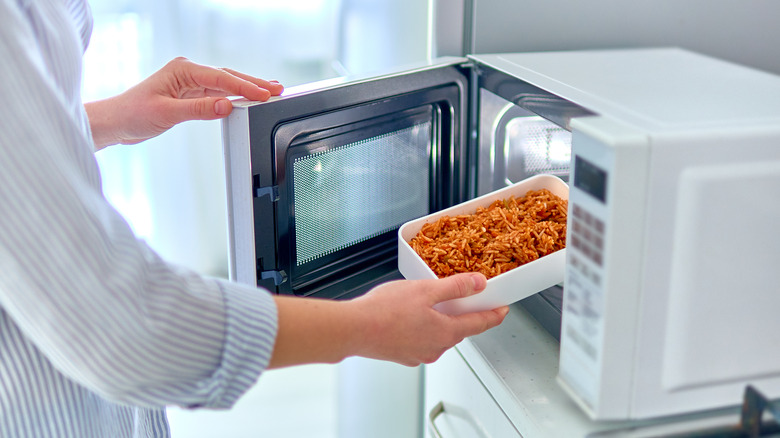The Money-Saving Reason To Avoid Using Small Pans On Large Burners
Maybe you grew up in a house where leaving a room without turning off the light would earn you a scolding, or maybe not. In either case, one thing you've probably noticed about being an adult and maintaining a home is that it's expensive. And no matter what your financial situation is, there's never a good reason to waste money. Taking small steps to conserve energy is in the best interests of your bank account, not to mention that of the planet.
But even if you're already in the habit of, for instance, turning things off and unplugging them when they're not in use, there are some little things you can do in the kitchen that could make a big impact on your energy bill. If you have an electric stove, one no-effort step you can take is to use cookware that corresponds to the size of the burner.
It may not seem like a big deal, but using a small pot or pan on a large burner is a common electric stove mistake that uses more energy than you actually need, as any part of the burner that's uncovered is just heating the air. Utilizing cookware that's even a couple of inches in diameter smaller than the burner can use up significantly more energy than a smaller burner would, for no added benefit.
Burnin' for you
Sometimes, you can't find the pot you want to use, or you're in the middle of preparing an elaborate meal and the ideal burner is already in use. But if possible, it's worth moving things around to have small cookware on smaller burners rather than large ones. According to the American Council for an Energy-Efficient Economy, using a 6-inch pot on an 8-inch burner will result in more than 40% of the energy used going to waste.
That's bad enough if you're just quickly frying an egg here and there, but if you cook regularly, it's going to add up. In fact, making a habit of using cookware with burners that correspond appropriately in size can save you something like $36 a year, according to We Energies, a Wisconsin-based natural gas and electricity company. This also goes for gas stoves, just to a lesser degree. We Energies estimates that gas stove users can save somewhere around $18 each year by simply using the right-sized cookware.
Microwaves, major impact
If you're trying to be energy conscious, it's important to know that your various appliances require different amounts of energy. As such, some appliances cost more to use than others. In an average kitchen, the electric oven is typically the most expensive appliance to cook with, closely followed by electric convection ovens and gas ovens. Your crockpot (or slow cooker — it's basically the same thing), however, falls at the less-expensive end, and the microwave is even cheaper than that.
Part of this has to do with the amount of space being heated — your oven is likely a lot bigger than your microwave, so it needs to produce more heat to get the whole space up to the desired temperature. When possible, using the microwave instead of the oven can save as much as 80% of energy usage. Plug-in countertop slow cookers use a fraction of the energy ovens do, even when you factor in the fact that the slow cooker can take several hours longer for food to be finished. If you're making sauce or something else that needs to simmer for a long time, choosing the crockpot over the stovetop can make your next energy bill a little lighter.


